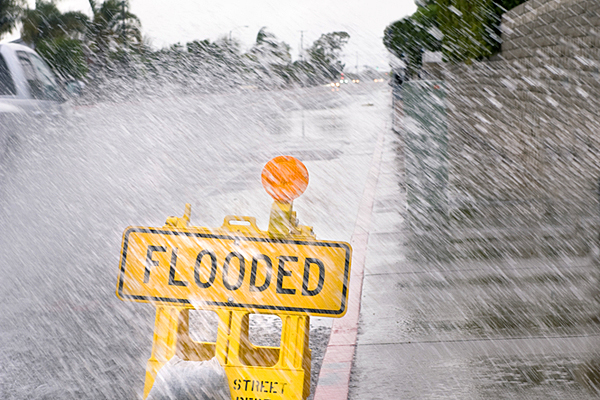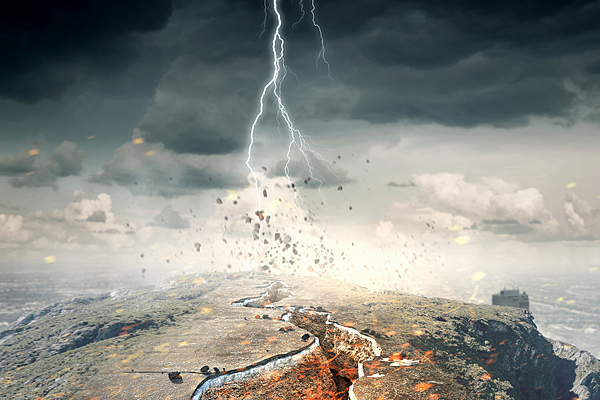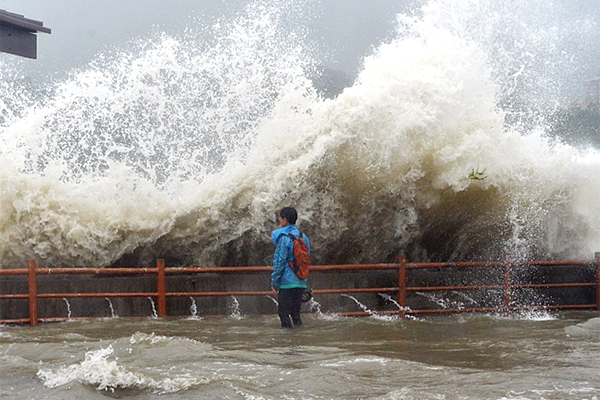Campus Health and Safety
Inclement Weather Safety
It was an unusual August when two gigantic typhoons landed in Hong Kong in rapid succession. Chaotic scenes all over Hong Kong were captured vividly in news.
It reminds us of typhoon Hope which had left similar devastating impact in 1979. Macau was even crumbled by typhoon Hato in a manner that no one would have anticipated. This is perhaps an appropriate time to remind our campus community about public safety under severe weather conditions.
The destructive power of the strong gale is one of the many fearful scenarios the general public may associate with typhoons. The howling wind not only knocks down trees, construction scaffolding, advertisement board, and swinging insecure items hanging outside buildings but also threatens pedestrians. The horrifying images send a clear message to caution those who wish to take a leisure walk outdoors to experience the sudden gust of wind. However, it is not uncommon to find some adventurous individuals who are well aware of the perils along the journey head out to the beach and seafront. It is definitely not advisable for campus residents to participate in any forms of outdoor activities under adverse weather conditions. Residents should stay indoors and close all windows and doors. Tape all windows to reduce the risks of injuries or damages in the event of window shattering under the strong wind. In case of emergency, residents can call the Security Office at 2358-8999 for immediate assistance.





The impact of Hato at the lowland areas during high tide was an unusual experience worth taking a serious note. Who would have thought that the wind-driven waves could reach up to the fourth and the fifth floors of a residential apartment at the seafront and engulf a fishing village without any remorse? The situation in Macau was many times worse than what Hong Kong had experienced. These are the clear signals that residents should not approach the seafront in time of typhoon. The inrushing waves could sweep away wave observers at any moment. Residents should keep away from any rivers, seafront, and beaches and stay in a safe indoor environment.
On top of the wind and the waves, heavy thunderstorm is another frightening feature that frequently accompanies typhoons. Steep slopes and cliff edges are prominent landscape features found everywhere in Hong Kong. These features are susceptible to landslide under heavy rains. One of the bitter lessons that the whole of Hong Kong learnt about the danger associated with these landscape features manifested itself in 1972 when a luxury apartment block in mid-levels was toppled down and a squatter village in Sau Mau Ping was buried by mudslide from nearby slopes. Both tragic events caused serious damages and loss of many lives. The Government has substantially improved on the management of dangerous slopes since then. While landslide is a frequent problem that comes into our mind under heavy rain/ thunderstorm, the danger posts by lightning is not to be underestimated. Lightening can strike during rainstorm as well as at the time when there is no prior warning. According to the Hong Kong Observatory, it is necessary that we cease outdoor activities and take cover indoors when lightning strikes. If there is no immediate shelter available, one should crouch down with as little of your body touching the ground as possible as suggested by the Center of Disease Control and Prevention USA. It is imperative to check for thunderstorm warning before engaging any outdoor work or activities. The Hong Kong Observatory has provided a web link for public’s inquiry on development of thunderstorm in the local region. The service allows lightning forecast up to one hour ahead at a location selected by the inquirer. Detailed information can be found in the Observatory’s webpage Hong Kong Observatory and Location-specific Lightning Alert Webpage
